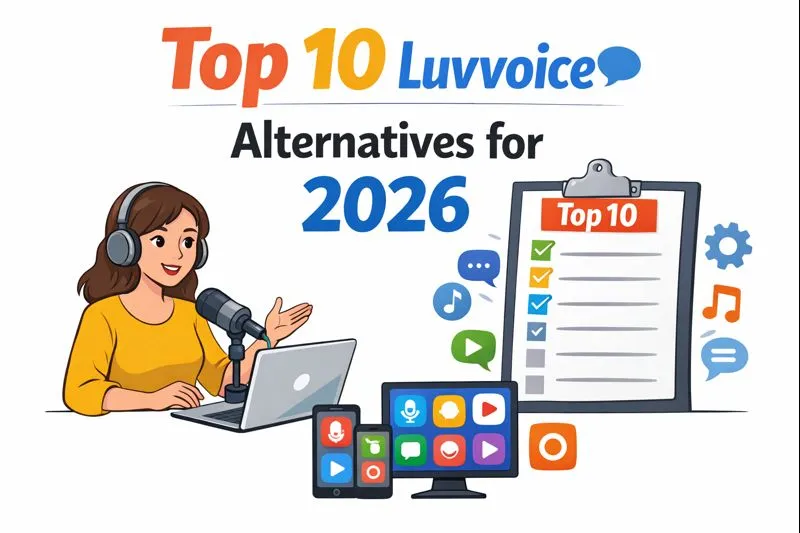Unlocking Content Excellence: How Voice Analytics Drives AI Voiceover and Audio Production Success
TL;DR
Introduction: The Untapped Potential of Voice Analytics in Audio Production
Imagine unlocking hidden insights from every word spoken in your audio productions. Voice analytics is rapidly changing how we understand and optimize audio content. (Voice Analytics: How it Works, Benefits & Use Cases | Sprinklr)
Voice analytics involves analyzing spoken interactions to extract valuable data. OpenText details how this technology can transform customer experience and engagement by identifying patterns in speech.
- Improved engagement: Understand listener reactions and tailor content accordingly.
- Higher retention: Identify drop-off points and optimize segments to hold attention.
- Better ROI: Measure the impact of your audio content with concrete data.
This allows for informed decisions that resonate with your audience.
Always ensure data privacy and avoid biased analysis. Transparency is key to building trust with your listeners.
Let's explore the evolution of ai voiceover and the critical need for data-driven insights.
Understanding the Fundamentals of Voice Analytics
Voice analytics is more than just listening; it's about understanding the story behind the sound. But what exactly goes into making voice analytics work? Let's break down the fundamentals.
Speech-to-text conversion accuracy: This is the foundation. Accurate transcription ensures that the analysis is based on what was actually said, not a misinterpretation.
Sentiment analysis: Detecting emotions and attitudes is crucial. It helps gauge customer satisfaction or frustration levels.
Acoustic analysis: Measuring tone, pace, and clarity adds another layer. Was the speaker hesitant, rushed, or confident? These elements provide context.
Data aggregation and reporting: The final step is compiling and presenting the data in an understandable format. This allows businesses to make informed decisions.
Voice data comes from various sources, each offering unique insights.
Customer feedback from surveys and reviews: Direct opinions provide a clear understanding of customer sentiment, helping to identify common pain points or areas of praise that can inform scriptwriting and voice selection.
Call center recordings and support interactions: These interactions reveal pain points and areas for service improvement, offering insights into how customers articulate problems and what kind of language or tone is most effective in resolving them.
Social media comments and mentions: Monitoring social media provides real-time feedback and sentiment analysis, giving a pulse on public perception and language trends that can be incorporated into voiceover scripts.
Podcast and video analytics: Understanding listener engagement helps tailor content effectively, showing which segments hold attention and which might cause listeners to tune out, directly informing pacing and content structure.
Applications of Voice Analytics for Enhanced AI Voiceover
AI voiceover is rapidly transforming content creation, but how can we ensure it truly resonates with audiences? Voice analytics provides the data-driven insights needed to refine and enhance ai voice performances.
Voice analytics helps identify confusing or ineffective language in scripts. This ensures clarity and improves audience comprehension.
- By analyzing listener feedback, you can identify sections where comprehension drops.
- Optimize script flow with data on listener engagement.
- Tailor scripts to specific target audiences by analyzing their language preferences.
Selecting the right voice is critical for engaging listeners. Voice analytics helps match voice characteristics to content and audience.
- Sentiment analysis helps choose the right tone for the script.
- Test different voices to determine the best fit for your content.
- Align voice characteristics with the content's subject matter.
Effective delivery is crucial for a professional voiceover. Voice analytics helps improve voice delivery and pronunciation.
- Analyze pronunciation errors and speech patterns to provide targeted feedback.
- Ensure consistent quality across all voiceovers by monitoring delivery metrics.
- Evaluate pacing and intonation to maintain listener engagement.
Practical Strategies for Implementing Voice Analytics in Your Workflow
Ready to harness the power of voice analytics but unsure where to start? This section outlines actionable strategies to seamlessly implement voice analytics into your existing workflows.
- Assess current infrastructure: Evaluate your existing audio production tools and identify compatible voice analytics platforms. Ensure your systems can handle the data load.
- Choose the right tools: Select software that aligns with your project needs, whether it's sentiment analysis, speech-to-text accuracy, or acoustic analysis. Consider cloud-based solutions for scalability.
- Develop training programs: Equip your team with the skills to interpret voice analytics data. This includes understanding metrics, identifying patterns, and translating insights into actionable improvements.
Integrating voice analytics into your workflow can revolutionize your audio production process.
- Real-time feedback: Implement systems that provide immediate insights during recording sessions. This empowers voice actors and producers to make on-the-spot adjustments, enhancing the final product.
- Script optimization: Use analytics to refine scripts based on audience engagement data. Identify sections where listener attention wanes and adjust accordingly.
- Voice selection: Leverage data to match the ideal voice to your content. Sentiment analysis helps ensure the selected voice resonates with the intended emotional tone.
By following these steps, you'll be well-equipped to integrate voice analytics and refine your content.
Case Studies: Real-World Examples of Voice Analytics Success
Can voice analytics truly transform audio production? Let's explore how this technology drives success in real-world scenarios.
Voice analytics can significantly improve customer satisfaction in e-learning. By analyzing student engagement, developers can identify confusing sections and refine audio content for better comprehension. For instance, a study might reveal that a particular explanation delivered in a monotone voice leads to a 20% drop in comprehension scores, prompting a revision with a more engaging vocal performance.
Podcasters can use voice analytics to enhance listener engagement. Analyzing listener feedback helps to tailor content, improve production quality, and boost overall listenership. One podcast, after analyzing listener comments, found that segments discussing specific technical jargon were frequently skipped. They then revised their scripts to include clearer explanations, resulting in a 15% increase in average listening time.
Optimizing video voiceovers leads to better audience retention. Voice analytics helps identify drop-off points and refine voice delivery. This ensures that viewers remain engaged, ultimately improving conversion rates.
A retailer leveraged voice analytics to reduce customer effort. By identifying that "true-to-size" information was not being communicated effectively, they coached spokespeople to address sizing questions, increasing online purchases. OpenText's research highlights how such voice analytics applications drive compliance and improve customer experience by pinpointing communication gaps.
By leveraging voice analytics in such diverse fields, audio production can be revolutionized.
Ethical Considerations and Data Privacy
When working with voice data, ethical considerations and data privacy are not just important – they're absolutely paramount. It's about respecting individuals and building trust.
Compliance with Regulations: You've got to be on top of rules like GDPR and other local privacy laws. This means understanding what data you can collect, how you can use it, and for how long. It's not optional.
Informed Consent: People need to know their voice is being recorded and analyzed, and they need to agree to it. Transparency here is key. No sneaky data collection.
Data Security and Anonymization: Voice data can be pretty personal. So, it needs to be stored securely, and whenever possible, anonymized. This means stripping out any identifying information so the data can't be traced back to a specific person.
Bias Mitigation: Algorithms can sometimes pick up on and amplify existing biases. It's crucial to actively work to identify and reduce bias in your voice analytics tools and processes. This ensures fairness and prevents discriminatory outcomes.
User Control and Transparency: Giving individuals control over their data is a big part of ethical practice. This includes letting them know what data you have, how you're using it, and providing ways for them to opt-out or request deletion.
The Future of Voice Analytics in AI Voiceover and Audio Production
The future of voice analytics in ai voiceover and audio production holds immense potential. Imagine a world where audio content adapts in real time to listener emotions, creating uniquely engaging experiences.
AI and machine learning are advancing rapidly, enabling more accurate sentiment analysis and speech recognition. This allows for nuanced understanding of audience reactions.
Integration with diverse data sources such as CRM systems and social media platforms provides a holistic view of customer interactions. This integration enriches insights and enables more targeted content creation.
Real-time analytics and predictive modeling allow for immediate adjustments to audio content based on listener feedback. Imagine dynamically altering pacing or tone based on real-time engagement metrics. For example, if analytics detect a dip in listener attention during a specific sentence, the ai could automatically adjust the pacing to be slightly faster or inject a subtle change in intonation to re-engage them.
Tailoring audio content to individual preferences becomes seamless with advanced voice analytics. Ai voiceovers can adapt delivery based on listener demographics and past engagement.
Voice data helps create dynamic and interactive experiences, such as personalized podcast recommendations or adaptive e-learning modules. These experiences cater to individual learning styles and preferences.
Enhanced accessibility and inclusivity are achieved by analyzing speech patterns and adjusting audio output for diverse hearing abilities. This ensures content is accessible to a broader audience.
Developing expertise in voice analytics is vital for video producers. Understanding how to interpret data and apply insights will be key to creating impactful audio content.
Staying updated with industry trends ensures practitioners leverage the latest advancements in ai and machine learning. Continuous learning will be essential to remain competitive.
Building partnerships with voice analytics providers offers access to cutting-edge tools and expertise. When building these partnerships, consider the provider's track record, the flexibility of their technology, the quality of their support, and how their pricing aligns with your budget and needs.
Voice analytics is poised to revolutionize ai voiceover and audio production.
Conclusion: Embracing Voice Analytics for Content Excellence
Voice analytics is more than a trend; it's a necessity for content creators aiming for excellence. By understanding how audiences react to audio elements, you gain a competitive edge in a crowded market.
Embrace voice analytics as a strategic tool to elevate your content. Start small, scale your implementation, and continuously monitor your approach. It's about making smarter, more impactful audio.






